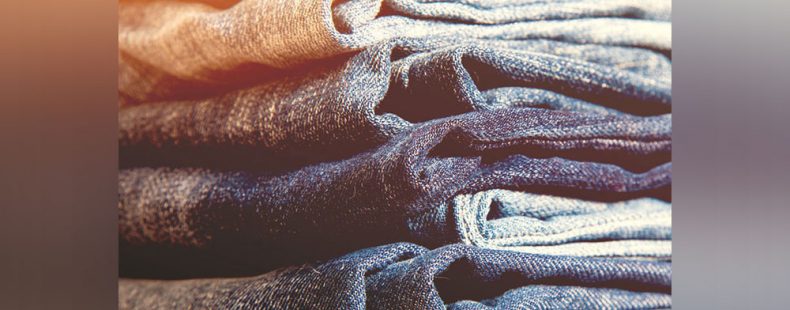Whether they’re boot-legged, low-rise, or skinny, most Americans have at least one pair that they can’t live without. Blue jeans are as American as apple pie, right?
Well, kind of. The word “jean” comes from the French jean fustian. Fustian is a type of twilled cotton cloth originally from Genoa, Italy. But the plural form of the word was first used in the United States, in 1843. Levi Strauss designed a pair of durable work trousers for laborers, complete with copper rivets that reinforced wear-and-tear seams. Eventually, average Joes and Janes adopted jeans, and they became the preferred casual pants for many Americans.
A lot of jeans are made of denim, “a heavy, Z-twist, twill cotton for jeans, overalls, and other work and leisure garments,” which derives from the French serge de Nîmes. Serge is another another twill fabric, “from Nimes,” a town in Southern France!
And of course, “pants” is short for pantaloons, a type of tights that were popular centuries ago. But what you might not know is that pantaloons were associated with “Pantaloun“, a silly old man character in Italian comedy who wore tight trousers over his skinny legs. The character was originally San Panteleone, a Christian martyr and a popular saint in Venice.
Read more!
So, whether you prefer jeans or some other kind of trousers, here’s one last bit of trivia for the next time someone tells you to do something by the seat of your pants (which means “by human instinct”). Supposedly, the expression was originally used to refer to pilots who were able to sense the condition of the plane by the engine vibrations they felt through the seat of their pants. But we have to wonder—what was the best fabric for their flying attire?














